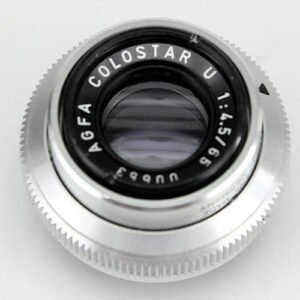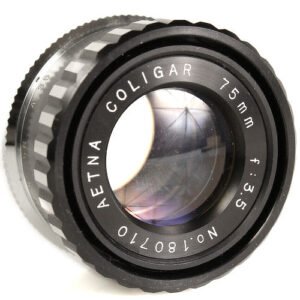| Weight | 152 g |
|---|---|
| Dimensions | 82 mm |
| Focal Length (mm) | |
| Max Aperture (f) | |
| Min Aperture (f) | |
| Aperture Blades | |
| Elements | |
| Rear Mount | |
| Serial Numbers | |
| Production |
Taylor-Hobson Ental II 82/4
Reverse Tessar enlarger lens. Pre-1965 marked ‘Taylor-Hobson’. Post 1965 marked ‘3¼” Rank Taylor Hobson’ (no hyphen). Lanthanum glass.


































16:9 –
Despite its vintage appearance, compounded by a production glitch (text seems to have been engraved after painting) that invariably results in flaky finishes, especially around the numerals, the Ental IIs capture pictures that seem remarkably modern. Chromatic and geometric aberrations are indiscernible. Excellent coatings create colour rendition and contrast that are hard to fault: images have a ‘firm’ look: solidly saturated and never washed-out. While obviously not delivering the very high contrast levels of modern lenses, the 82mm f4’s only weak point – for many applications, it’s a strong point – is the subtlest spherical aberration at maximum aperture. Stopped down at f5.6, and at its prime aperture of f8, this lens is critically sharp by any standard. In this regard it’s a better performer than the 2″ version.
Bokeh is relatively smooth, though not Leica-creamy: onion-ringing is visible on smaller apertures. Optical vignetting is good: there’s no swirl and cat-eye deformation of defocused specular highlights is minimal – bokeh balls stay round well into Zone B and are still fairly fat in Zone C.